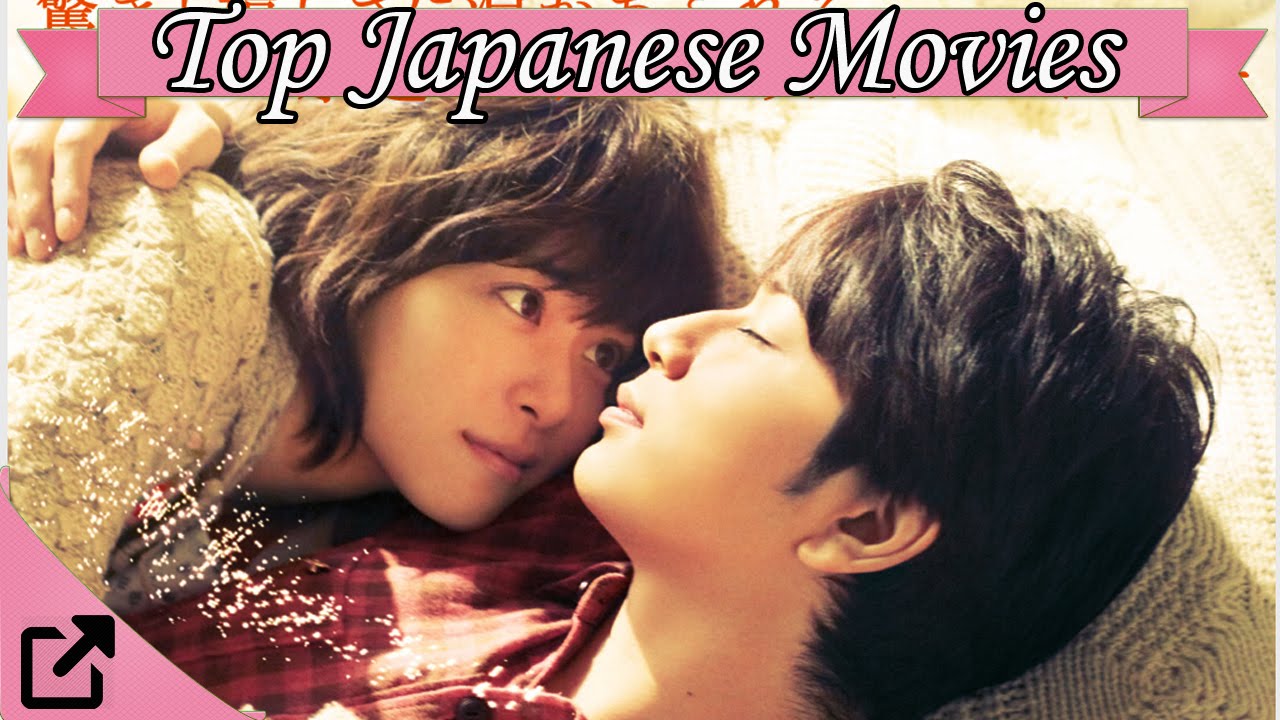Top 21+ Japanese Movies of All Time: This exploration delves into the captivating world of Japanese cinema, examining critically acclaimed films that have shaped cultural landscapes both domestically and internationally. We’ll analyze diverse genres, iconic directors, recurring themes, and the technological innovations that propelled these films to legendary status. From historical epics to poignant dramas, this journey through cinematic history reveals the artistry and impact of Japanese filmmaking.
The selection process considered a multitude of factors, including critical reception, cultural influence, box office performance, and lasting impact on subsequent filmmakers. We’ll compare different ranking methodologies, highlighting both commonalities and discrepancies across various “best of” lists. This allows for a nuanced understanding of the criteria used to determine a film’s place among the greats of Japanese cinema.
Defining “Top” Japanese Cinema
Defining what constitutes “top” Japanese cinema is a multifaceted endeavor, demanding a nuanced approach that considers various contributing factors. Simply relying on box office numbers, while indicative of popularity, overlooks the artistic merit and cultural impact that often define truly significant films. A comprehensive evaluation necessitates a balanced consideration of critical reception, lasting cultural influence, and commercial success, recognizing that these elements often intertwine in complex ways.
Different methodologies for ranking Japanese films exist, each with inherent strengths and limitations. Some prioritize critical acclaim, aggregating scores from prominent film critics and awarding points based on prestigious accolades such as awards at major film festivals (Cannes, Venice, Berlin). This approach emphasizes artistic merit and cinematic innovation but may undervalue films with broader cultural resonance that lack critical recognition. Other ranking systems incorporate box office performance, reflecting a film’s popularity and cultural penetration within Japan and internationally. This method, however, might overlook critically acclaimed works that failed to achieve widespread commercial success due to thematic content or release strategy. A hybrid approach, combining critical scores with box office data and cultural impact assessments, aims to offer a more holistic ranking. However, quantifying cultural impact presents a significant challenge, requiring subjective judgments and potentially introducing bias.
Criteria for Ranking Japanese Films
The most effective methodologies for ranking films often employ a weighted scoring system. This allows for the incorporation of various factors, each contributing differently to the overall score. For instance, a system might assign 40% weight to critical acclaim (based on aggregate scores from reputable sources), 30% to box office performance (adjusted for inflation and market conditions), and 30% to cultural impact (assessed through qualitative analysis of the film’s influence on subsequent works, societal discourse, or popular culture). This weighted system allows for a more balanced assessment than simply relying on a single metric. For example, a film might receive high critical praise but limited box office success; the weighted system ensures that its artistic merit is still recognized in the overall ranking. Conversely, a commercially successful film lacking critical acclaim might still receive a lower ranking, preventing the list from being dominated solely by popular, but possibly less artistically significant, works.
Comparative Analysis of Top Film Lists
Examining various “top Japanese film” lists reveals both common themes and significant discrepancies. Frequently cited films across multiple lists include Akira Kurosawa’s masterpieces like *Seven Samurai* and *Rashomon*, highlighting their enduring influence on cinema globally. Similarly, films like *Spirited Away* by Hayao Miyazaki consistently appear near the top, reflecting its immense box office success and enduring cultural impact. However, discrepancies arise when considering films with more niche appeal or those that achieved critical acclaim but limited commercial success. Some lists may prioritize auteur directors, leading to a higher representation of their works, while others may focus more on genre popularity, resulting in a different selection of films. These differences highlight the subjective nature of ranking, emphasizing the importance of understanding the underlying criteria and methodologies used in compiling any given list.
Directorial Styles and Influences

Japanese cinema boasts a rich tapestry of directorial styles, each reflecting unique artistic visions and societal influences. Understanding these styles and their evolution provides crucial insight into the enduring power of Japanese films. The interplay between domestic traditions and international cinematic currents significantly shaped the development of Japanese filmmaking.
Comparative Analysis of Directorial Styles
Five prominent directors exemplify the diverse stylistic approaches within Japanese cinema: Akira Kurosawa, Yasujiro Ozu, Kenji Mizoguchi, Takeshi Kitano, and Hayao Miyazaki. Kurosawa, known for his epic samurai films and dynamic visual storytelling, employed sweeping camera movements and dramatic close-ups, contrasting sharply with Ozu’s minimalist style characterized by static camera positions, low angles, and a focus on everyday life. Mizoguchi’s films often featured long takes and flowing camera movements, exploring social issues and the lives of women. Kitano, a director of both yakuza films and quirky comedies, is recognized for his stark visuals, deadpan humor, and often violent narratives. Finally, Miyazaki, the master of animation, employs vibrant visuals, fantastical settings, and deeply emotional storytelling to create immersive and captivating worlds. These directors represent only a fraction of the stylistic diversity within Japanese cinema, yet their individual approaches significantly impacted the evolution of the medium.
Influence of International Cinema on Japanese Filmmaking
International cinema significantly influenced Japanese filmmaking, particularly Western cinema. Early Japanese filmmakers were exposed to Western techniques and storytelling conventions, leading to experimentation with different genres and styles. For instance, Kurosawa’s films, while deeply rooted in Japanese culture, demonstrate the influence of Western directors like John Ford and Sergei Eisenstein in their use of dramatic composition and dynamic editing. The introduction of sound technology also facilitated the adoption of Western narrative structures and storytelling approaches. The post-war period saw increased exposure to European and American cinema, further enriching the stylistic landscape of Japanese filmmaking. This cross-cultural exchange resulted in a unique blend of East and West, creating a distinctly Japanese cinematic language.
Impact of Directors on Genre Evolution
Several directors profoundly shaped the evolution of specific genres within Japanese cinema. Kurosawa’s samurai films, such as “Seven Samurai” and “Yojimbo,” redefined the genre, moving beyond traditional conventions and exploring themes of honor, loyalty, and morality with a complex and nuanced approach. Ozu’s contributions to the family drama genre are equally significant, establishing a uniquely Japanese style of intimate storytelling that focuses on subtle emotional nuances and the dynamics of family relationships. Mizoguchi’s work often centered on the lives of women, challenging traditional gender roles and contributing significantly to the development of social realism in Japanese cinema. Similarly, Kitano’s contributions to the yakuza genre brought a distinctive blend of violence, dark humor, and philosophical reflection. These examples illustrate how individual directors not only mastered existing genres but also redefined and expanded their boundaries.
Thematic Exploration in Top Japanese Films
Japanese cinema, renowned for its diverse storytelling and visual artistry, consistently explores profound themes reflecting the nation’s unique cultural values and historical trajectory. These recurring motifs, woven into narratives spanning genres, offer insightful perspectives on Japanese society and its evolution. Analyzing these themes reveals not only the filmmakers’ artistic vision but also the societal anxieties, aspirations, and transformations reflected in their work.
Thematic explorations in top Japanese films frequently intersect, with individual movies often incorporating multiple layers of meaning. However, certain thematic clusters emerge, allowing for a more organized understanding of the dominant narratives. This analysis will categorize key thematic concerns and illustrate them with examples from notable films.
Societal Critique and Class Struggle
Many top Japanese films engage in pointed critiques of societal structures and inequalities. These critiques often manifest as explorations of class divisions, the impact of rapid modernization, and the challenges faced by marginalized groups. For example, films like Akira Kurosawa’s “Ikiru” powerfully depict the frustrations of bureaucratic systems and the individual’s struggle against societal inertia. Kenji Mizoguchi’s works, such as “Ugetsu,” often portray the harsh realities faced by the peasantry during times of social upheaval. The films subtly but effectively challenge the status quo, highlighting the human cost of societal disparities.
Human Relationships and Family Dynamics
The complexities of human relationships and the importance of family are recurring themes. Japanese cinema often delves into the intricacies of familial bonds, exploring themes of duty, loyalty, and the delicate balance between individual desires and collective responsibility. Yasujiro Ozu’s films, such as “Tokyo Story,” are masterclasses in portraying the quiet poignancy of family relationships and the challenges of aging and generational differences. In contrast, films like “Departures” examine the profound impact of death and grief on family dynamics, highlighting the significance of ritual and emotional support within a familial context.
Historical Events and National Identity
Several top Japanese films grapple with the nation’s historical experiences, particularly the impact of war and its aftermath. These films often explore themes of national identity, the burden of the past, and the search for meaning in the face of trauma. Isao Takahata’s animated masterpiece, “Grave of the Fireflies,” is a harrowing depiction of the human cost of war, viewed through the eyes of children. Films like “Rashomon,” while not explicitly focused on a singular historical event, explore the subjective nature of truth and the complexities of human morality within a historical context. These narratives often prompt reflection on Japan’s place in the world and its evolving national identity.
The Search for Meaning and Existentialism
A prevalent theme across many top Japanese films is the search for meaning and purpose in life. This exploration often takes on an existential tone, reflecting on the transient nature of existence and the individual’s struggle to find fulfillment. Kurosawa’s “Seven Samurai” and “Yojimbo” explore themes of morality, duty, and the search for purpose within a violent and uncertain world. The characters often grapple with their own mortality and the implications of their choices, adding a layer of existential depth to the narratives.
Technological and Artistic Innovation
Japanese cinema has a rich history of pushing creative boundaries, often intertwined with technological advancements. The evolution of filmmaking techniques in Japan wasn’t just about adopting Western styles; it involved a unique synthesis of indigenous aesthetics and innovative approaches to storytelling and visual expression. This resulted in a distinctive cinematic language that continues to influence filmmakers worldwide. This section will explore key examples of technological and artistic innovation in prominent Japanese films and their lasting impact.
The interplay between technological innovation and artistic expression is a defining characteristic of many top Japanese films. Early advancements in camera technology, for instance, allowed for dynamic shots and innovative framing, enriching the visual storytelling. Later, the adoption and adaptation of special effects techniques, often with a distinctly Japanese aesthetic sensibility, created unforgettable cinematic moments. These innovations weren’t simply technical feats; they fundamentally altered the way stories were told and received, leading to both critical acclaim and commercial success.
Cinematography and Mise-en-scène
Early Japanese cinema often utilized striking compositions and carefully controlled lighting to create a distinct visual style. Akira Kurosawa’s films, for example, are renowned for their dynamic camerawork, incorporating long takes, dramatic low-angle shots, and innovative use of depth of field to emphasize key elements within the frame. His use of dramatic lighting, often contrasting stark shadows with bright highlights, created a visually arresting and emotionally powerful aesthetic. This approach, which differed significantly from the more static styles prevalent in some Western cinema at the time, profoundly influenced subsequent generations of filmmakers, both in Japan and internationally. The meticulous attention to mise-en-scène, the arrangement of visual elements within the frame, became a hallmark of many acclaimed Japanese films, contributing significantly to their artistic merit and lasting impact.
Editing Techniques
Japanese filmmakers have consistently demonstrated mastery of editing techniques. Kurosawa’s work, again, stands out. His films often feature rapid-fire editing sequences to build suspense or convey the chaos of battle, contrasting these with longer, more contemplative shots to emphasize emotional weight or character reflection. This dynamic approach to editing wasn’t just about technical proficiency; it was a crucial element in his storytelling, enhancing the emotional impact and thematic depth of his narratives. Other directors, such as Kenji Mizoguchi, employed a more deliberate, almost lyrical style of editing, using slow dissolves and carefully chosen transitions to create a fluid and emotionally resonant cinematic experience. The diversity of editing styles employed by Japanese filmmakers showcases the versatility and expressive power of this crucial aspect of filmmaking.
Special Effects and Visual Innovation
While not always reliant on elaborate special effects, Japanese cinema has demonstrated ingenuity in creating visually stunning and imaginative sequences. Early films utilized creative techniques like miniatures and matte paintings to achieve impressive visual results, often with a distinctive artistic flair. More recently, the integration of CGI and other digital effects has allowed for even greater visual possibilities, although often with a careful consideration of maintaining a balance between technological advancements and the preservation of a uniquely Japanese cinematic sensibility. The use of innovative visual techniques, whether traditional or digital, has consistently been a crucial factor in the critical and commercial success of many Japanese films. These techniques, seamlessly integrated into the narrative, enhance the overall cinematic experience and leave a lasting impression on the audience.
Cultural Impact and Global Reception
The top Japanese films have profoundly impacted both Japanese society and global cinema, shaping cultural perceptions and influencing filmmaking techniques worldwide. Their success isn’t merely measured by box office numbers, but by their enduring presence in popular culture, their impact on subsequent artistic endeavors, and their contribution to the global understanding of Japanese culture. This influence spans decades, demonstrating a lasting legacy that continues to resonate.
The reception of these films in international markets has been varied but largely positive, contributing significantly to the global popularity of Japanese cinema. Many films achieved critical acclaim and commercial success abroad, introducing Western audiences to unique storytelling styles, thematic concerns, and aesthetic sensibilities distinctly Japanese. This exposure, in turn, influenced filmmakers worldwide, inspiring new works and fostering cross-cultural collaborations.
Impact on Japanese Society
These films often reflect and shape Japanese societal values, attitudes, and historical events. For example, films dealing with post-war trauma helped to process collective national experiences, while others explored evolving social norms and gender roles. Some films have become cultural touchstones, frequently referenced in everyday conversations and integrated into popular culture through parodies, merchandise, and other forms of media. The enduring popularity of certain films also demonstrates their capacity to resonate across generations, continually influencing how Japanese society views itself and its history. This impact extends beyond entertainment; these films have served as important cultural artifacts, shaping national identity and contributing to ongoing societal discussions.
International Reception and Influence
The international success of top Japanese films has significantly broadened the global landscape of cinema. Akira Kurosawa’s works, for example, heavily influenced prominent directors like George Lucas and Martin Scorsese, demonstrating the profound impact of Japanese cinematic techniques on Western filmmaking. The global popularity of anime and Studio Ghibli films has introduced a distinct aesthetic and storytelling style to international audiences, influencing animation styles and narratives worldwide. Furthermore, the international distribution and critical acclaim of many Japanese films have helped to foster a greater appreciation for Japanese culture and its artistic expressions beyond national borders.
Adaptations, Remakes, and References
Numerous top Japanese films have been adapted, remade, or referenced in various media, showcasing their lasting influence. Kurosawa’s *Seven Samurai* has been remade multiple times, including the classic Western *The Magnificent Seven*. Similarly, many anime films and series have inspired adaptations in live-action formats, demonstrating the versatility and global appeal of Japanese storytelling. The unique visual styles and narrative structures of Japanese cinema are often referenced in other films, video games, and even music videos, showcasing their permeation into popular culture and artistic expression beyond the confines of the original films themselves. These adaptations and references highlight the enduring power and cultural impact of these Japanese cinematic masterpieces.
Music and Sound Design: Top 21+ Japanese Movies Of All Time
Music and sound design in Japanese cinema are not merely background elements; they are integral components shaping emotional resonance and narrative depth. Often subtly woven into the fabric of the film, these sonic landscapes contribute significantly to the overall cinematic experience, enriching the viewer’s understanding and emotional connection to the story and characters. The careful integration of sound underscores the nuanced storytelling characteristic of Japanese filmmaking.
Soundtracks in Japanese films often reflect a delicate balance between traditional and modern influences, reflecting the nation’s complex cultural heritage. This is particularly evident in the interplay between diegetic and non-diegetic sound, with the former grounding the narrative in reality and the latter enhancing emotional weight and thematic exploration. The use of silence, too, plays a crucial role, often amplifying the emotional impact of visual storytelling.
Soundtracks in “Spirited Away” and “Seven Samurai”
The soundtracks of Hayao Miyazaki’s “Spirited Away” and Akira Kurosawa’s “Seven Samurai” offer a compelling comparison of stylistic differences and thematic contributions. Joe Hisaishi’s score for “Spirited Away” utilizes a blend of orchestral and traditional Japanese instrumentation, creating a whimsical yet emotionally resonant soundscape that perfectly complements the film’s fantastical journey. The music often features playful melodies and ethereal harmonies that capture the wonder and magic of the spirit world, while also incorporating moments of tension and suspense to heighten the narrative’s dramatic arc. Conversely, the score for “Seven Samurai,” composed primarily by Fumio Hayasaka, emphasizes traditional Japanese instrumentation and a more austere, epic style. The music underscores the film’s themes of honor, loyalty, and the harsh realities of feudal Japan, employing powerful percussion and melancholic melodies to reflect the gravity of the samurai’s struggles and the film’s ultimately tragic undertones. The contrast highlights how distinct musical styles can effectively serve very different narrative purposes.
Cultural Reflections in Sound Design
Music and sound design in Japanese films often reflect specific cultural contexts. For instance, the use of traditional Japanese instruments like the shakuhachi (bamboo flute) or koto (zither) can evoke a sense of history, tradition, and cultural identity. The incorporation of specific soundscapes – the bustling sounds of a city, the tranquility of nature, or the quiet intimacy of a domestic setting – can ground the narrative within a specific cultural context. The strategic use of silence, often employed to amplify emotional impact or to create a sense of unease, is another important element. Furthermore, the way sounds are layered and mixed can reflect a specific aesthetic sensibility, contributing to the overall cinematic experience and enhancing the viewer’s understanding of the film’s cultural context. The careful consideration of sound in Japanese cinema demonstrates a deep understanding of how sonic elements can enrich narrative and cultural meaning.
Historical Context and Production
Understanding the historical context surrounding the production of top Japanese films is crucial to appreciating their artistic merit and cultural significance. These films weren’t created in a vacuum; they reflect the socio-political climate, technological advancements, and evolving artistic sensibilities of their time. Examining their production challenges reveals the resilience and innovation of Japanese filmmakers throughout various periods of significant change.
The production of these films often faced numerous challenges, ranging from censorship and limited resources in earlier eras to the rapid shifts in audience preferences and technological innovations in later periods. The impact of war, economic fluctuations, and evolving social norms profoundly influenced both the content and the very possibility of filmmaking in Japan.
Production Challenges Faced by Japanese Filmmakers
Japanese filmmakers faced a unique set of challenges throughout different historical periods. The pre-war era saw strict government censorship, limiting the themes and narratives filmmakers could explore. The post-war period brought about economic instability and a shift in societal values, demanding adaptability and innovation from filmmakers. The rise of television presented a significant challenge to the film industry, necessitating creative strategies to retain audiences. Technological advancements, while offering new possibilities, also required significant investment and expertise. Furthermore, the balance between preserving traditional cinematic styles and embracing modern techniques posed a continuous creative dilemma.
Historical Context and Production of Five Notable Films
The following explores the historical context of five films, highlighting their relevance to their time:
- Rashomon (1950): Produced in the aftermath of World War II, Kurosawa’s Rashomon reflects the disillusionment and moral ambiguity of the time. The film’s exploration of subjective truth resonated with a nation grappling with its past and seeking to redefine its identity. The film’s international success played a pivotal role in introducing Japanese cinema to a global audience.
- Seven Samurai (1954): This epic film, also by Akira Kurosawa, was produced during the early stages of Japan’s post-war economic recovery. The film’s themes of loyalty, camaraderie, and the struggle against overwhelming odds resonated with a nation rebuilding itself. Its grand scale and intricate action sequences demonstrated the evolving technical capabilities of Japanese filmmaking.
- Ugetsu (1953): Kenji Mizoguchi’s Ugetsu, produced amidst post-war uncertainty, explores themes of ambition, illusion, and the fragility of human existence. The film’s use of atmospheric visuals and evocative storytelling reflected the anxieties and uncertainties of the period. Its exploration of supernatural elements provided a unique lens through which to examine the complexities of human nature within a changing social landscape.
- Tokyo Story (1953): Yasujiro Ozu’s Tokyo Story, created in the early post-war years, offers a poignant depiction of family relationships and the changing dynamics of Japanese society. The film’s understated style and focus on everyday life contrasted sharply with the more flamboyant styles of some contemporary films, reflecting a growing realism in Japanese cinema. The film’s exploration of generational conflict resonated deeply with audiences experiencing rapid societal shifts.
- Spirited Away (2001): Hayao Miyazaki’s Spirited Away, produced at the turn of the millennium, reflects the anxieties and uncertainties of a rapidly changing globalized Japan. The film’s fantastical world serves as a metaphor for the complexities of modern life, exploring themes of environmentalism, consumerism, and the importance of preserving traditional values in a rapidly changing world. Its immense global success cemented the enduring power of Japanese animation on the world stage.
Timeline of Top Japanese Films, Top 21+ Japanese Movies of All Time
A visual timeline illustrating the production history of these films, incorporating key events and their impact, would be highly informative. While a visual representation cannot be included here, a textual representation would list the films chronologically, noting significant historical events that coincided with their production. This would illustrate the interplay between the socio-political context and the cinematic output. For example, the rise of Japanese nationalism in the 1930s would influence the themes and styles of films produced during that era, while the post-war occupation and subsequent economic boom would shape the films of the 1950s and beyond. This approach allows for a clearer understanding of how historical events directly influenced the development of Japanese cinema.
Critical Reception and Awards
The critical reception and awards garnered by Japanese films reflect not only the quality of individual works but also the evolving tastes and perspectives of both domestic and international audiences. Analyzing these accolades reveals shifts in cinematic trends, the enduring power of certain themes, and the growing global recognition of Japanese cinema’s unique contributions to the art form. The range of critical response, from enthusiastic praise to measured critique, often depends on genre, directorial style, and the film’s historical context.
The critical acclaim bestowed upon Japanese films varies significantly across genres and eras. Early masterpieces like Akira Kurosawa’s samurai epics often received widespread international acclaim, establishing a foundation for future generations of filmmakers. Conversely, more contemporary films exploring social issues or experimental techniques may have garnered a more niche but equally fervent following, particularly within critical circles. The awards received often reflect these different trajectories and audience receptions.
Awards Received by Notable Japanese Films
Major awards, such as the Palme d’Or at Cannes, the Golden Lion at Venice, and the Academy Awards, serve as significant indicators of a film’s artistic merit and global impact. For instance, Kurosawa’s *Seven Samurai* (1954) is a cornerstone of world cinema, influencing countless filmmakers and consistently appearing on “best of” lists. Its critical success is undeniable, and its impact extends beyond awards, shaping cinematic storytelling for decades. Similarly, *Spirited Away* (2001) by Hayao Miyazaki, while receiving the prestigious Academy Award for Best Animated Feature, also achieved phenomenal box office success and widespread popular acclaim, highlighting the potential for critical and commercial success to converge. Other films, while not necessarily achieving the same level of international recognition, might have won significant domestic awards, signifying their importance within the Japanese cinematic landscape. These awards, whether international or domestic, represent crucial validation of a film’s artistic achievement and cultural relevance.
Genre and Era Influences on Critical Reception
The critical response to Japanese films has demonstrably shifted over time, reflecting changing cultural attitudes and cinematic trends. Early postwar films, often characterized by stark realism and social commentary, resonated with audiences and critics grappling with the aftermath of war. Later periods saw the rise of distinct genres like anime, which initially faced challenges in gaining international recognition but eventually achieved global dominance. The stylistic choices and thematic concerns of a film are also crucial in determining its critical reception. For instance, films emphasizing visual spectacle and innovative animation techniques, such as those by Studio Ghibli, tend to receive broader acclaim, whereas films focusing on more intimate or experimental narratives might appeal to a more specialized audience. This disparity underscores the diverse range of critical perspectives and the evolving standards of judgment within the cinematic world.
Examples of Critical Consensus and Divergent Opinions
While many films enjoy widespread critical acclaim, some have faced more divisive receptions. This often stems from a film’s bold stylistic choices, controversial themes, or its departure from established conventions. For example, some experimental films might be praised for their originality but criticized for their accessibility. Similarly, films tackling sensitive social or political issues might provoke strong reactions, leading to a more polarized critical response. The nuanced nature of critical reception highlights the subjective and multifaceted aspects of evaluating cinematic works. Analyzing these contrasting viewpoints provides valuable insight into the complex relationship between a film, its audience, and the evolving landscape of critical discourse.
Last Recap
Ultimately, this exploration of the Top 21+ Japanese Movies of All Time highlights not only the individual achievements of these films but also the rich tapestry of Japanese cinematic history. The diverse genres, stylistic innovations, and enduring themes presented showcase the country’s profound contributions to global cinema. From groundbreaking special effects to powerful storytelling, these films remain captivating and relevant, ensuring their continued legacy for generations to come.
Obtain recommendations related to Top 21+ Movies in U.S. Cinema History that can assist you today.
Obtain a comprehensive document about the application of Psychological Thrillers for Mature Viewers that is effective.
Examine how Censorship Battles Over Mature Films can boost performance in your area.




